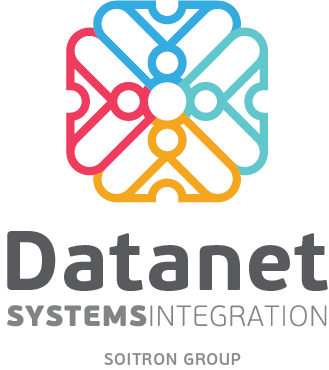VXLAN is a technology widely adopted by data centers that want to improve the performance, reliability, and scalability of the networks. This represents an evolution of the Virtual Local Area Network (VLAN), which for more than two decades has been the most popular method for network segmentation and application isolation in data centers. The method worked well for small infrastructures and single-tenant use scenarios. However, with the arising of large data centers with multi-tenant architectures and increased adoption of cloud services, the concept was taken over and enhanced by Virtual eXtensible Local Area Networks (VXLAN).

What news brings VXLAN
VXLAN is a standard protocol – documented in IETF RFC 7348 – that provides a method of encapsulation of Ethernet traffic (Layer 2) in an IP network (Layer 3) that allows devices and applications to optimally communicate over large distributed networks.
In a simplified definition, VXLAN enables the implementation of several separate virtual networks – “overlay” – over a physical IP transport network – “underlay”. From the separation of the two planes – underlay and overlay – derive two first immediate advantages:
- the provisioning, change and deletion of the virtual connections can be done without modifying the physical network;
- the physical network can be easily and rapidly scaled, for instance routers can be added or upgraded, communication lines can be added or improved, without the need for overlay redesign or reconfiguration.
In order to achieve these benefits, the protocol encapsulates the Ethernet frames in packets having a header that includes a 24-bit VXLAN Network Identifier (VNI). This leads to another important benefit: up to 16 million VXLAN tunnels/segments can coexist in the same domain, as opposed to only 4,094 allowed by the classic method of virtualization of Layer 2 – VLAN networks. This is a real advantage, especially in the case of telecom service providers – for example, such a provider with 400 customers, can only offer 10 VLANs per customer while, in the case of using the new protocol, it can provide each of them with ten thousand of VXLANs.
At the same time, the use of VNI facilitates multi-tenant approaches – the traffic managed with the help of VNI is isolated, and depending on the configuration VXLAN can work with VRF technology for additional isolation. Last but not least, VXLAN allows any virtual machine (VM) to be uniquely identified by MAC and VNI addresses. As a result, multiple VMs can have the same MAC address as long as they have different VNIs, which also contributes to simplifying the management of multi-tenant networks.
The points where frames are encapsulated and decapsulated are known as VXLAN Tunnel End Points (VTEP) and can be represented, for example, by servers hosting virtual machines or virtualized applications, or can be implemented at the processor level in Ethernet switches. A specific advantage of this approach is that VTEP servers can support multiple overlapping network services, such as micro-segmentation. On the other hand, switch-level VTEPs can benefit from the advantage of hardware acceleration – as is the case with the Cisco Nexus 9300-FX platform, which implements VXLAN in ASIC.
The benefits of switching to VXLAN
Starting 2021, Orange Romania uses a VXLAN EVPN (Ethernet VPN) architecture model, implemented with Datanet Systems’ professional services, in several data centers. The new technology enabled Orange to obtain:
- An increased level of geo-resilience – any workload can be easily and quickly moved from one Data Center to another, in case of events, having the reconvergence time improved by over 1000%.
- The simplification of the migration effort – moving workloads between Data Centers no longer requires reconfiguration processes, and can be done without altering specific network parameters (IP, netmask, gateway, etc.)
- The improvement of the reaction speed – the time required to make configurations, provision of resources, service development, migration of workloads, etc. have been reduced, the implementation and commissioning of a new solution can be achieved up to 75% faster.
- The limitation of the end customer’s disturbances – the migration of workloads between Data Centers can be achieved with a service interruption of less than 2 seconds.
- Increased security at the end customer level – VXLAN technology offers multiple network segmentation possibilities (without the specific limitations of traditional VLANs), and multi-tenancy capabilities natively ensure a higher level of security.
More details about the VXLAN EVPN project implemented at Orange Romania are available in the dedicated case study at https://datanets.ro/en/clients-and-references/the-modernization-of-the-orange-romania-network/
VXLAN is currently one of the popular protocols for network virtualization in data centers, imposing itself in front of other alternatives through its immediate advantages: scalability, agility, resilience.
Find out more technical and commercial information about VXLAN solutions in the Datanet Systems portfolio, as well as about the services delivered by the company, by contacting us at sales@datanets.ro .
 Palo Alto SOAR, four common working...
Palo Alto SOAR, four common working...
